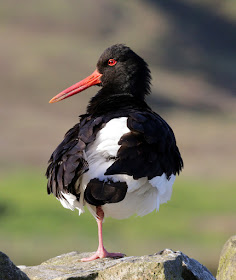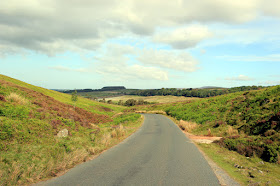Bird ringers around the country report mixed results with Barn Owls this year. Some say productivity is down while others say “normal” and yet others think the season is late. The Pilling owls were at it again this morning, hunting in bright sunshine for all to see. Maybe they are struggling to find food?
One owl appeared to want to hunt the roadside where the car was parked so after a few snaps I motored off and left them to the job in hand.
Barn Owl
Barn Owl
Barn Owls are highly dependent upon a healthy population of their main prey voles, both water vole and field vole, but they also take mice, shrews and rats.
The abundance of voles in particular fluctuates strongly with peaks occurring at intervals of three to four years.
The peculiar feature of voles is that autumn population densities can attain a couple of thousand individuals per hectare in peak years whereas during population lows the numbers may decrease to virtually zero. This lack of food puts extra pressure on owls and raptors that feed on small animals.
In contrast to owls which prey on animals, Sparrowhawks, as their name implies, feed entirely upon birds mostly smaller than themselves. At Cockersands I came across a blotchy young Sparrowhawk sat upon a handy wall from where it surveyed the immediate scene of feeding Starlings, Tree Sparrows and House Sparrows. A veritable bundle of nerves, when it sensed the click of the camera might pose a threat, off it shot, pursued by Swallows. Later in the morning I saw another Sparrowhawk, this one chased away from farm buildings by a posse of Swallows.
Sparrowhawk
A circuit of the lanes between Conder and Cockersands gave a fairly healthy count of small farmland birds which included at a minimum, 12 Sedge Warbler, 10 Whitethroat, 10 Skylark, 8 Reed Bunting, 6 Tree Sparrow, 4 Reed Warbler and 3 Pied Wagtail. The fields around here are drained by a network of ditches, conduits which eventually feed into coastal waters. At this time of year the channels overflow with the likes of common Phragmites reed and similar plants which provide linear wetlands for the species mentioned above.
Reedy Ditch
Sedge Warbler
Pied Wagtail
It’s a couple of years since I’ve seen our native UK Grey Partridge in this part of Lancashire known as The Fylde, an area bounded to the North, South, East and West respectively by Morecambe Bay, the River Ribble, the Pennines and the Irish Sea. That’s an awful lot of landmass in which to confidently state that the Grey Partridge is now completely absent, but I believe it be so. It seems we have to accept the inferior, introduced and now feral Red-legged Partridge as a substitute. Sad to say the red leg is here for all the wrong reasons and stands as a testament to the dreadful state of our once thriving bird populations. They're photogenic but I hate the damn things.
Red-legged Partridge
No change on the pool at Conder, the highlight being 175+ Redshank. And I’m not mentioning Common Terns, Avocets or Common Sandpipers today.
I called in to our Sand Martin quarry and where unfortunately we have not been able to reach just lately for a ringing session. There are still 200+ martins around, numbers swelled of late by the first flush of young from the nest. Hopefully we may get there soon and catch up with our catching. Around the area of the pool and in nearby field were 40+Curlew, 150 Starling, 1 Grey Heron, 4 Tree Sparrow and a single Linnet.
Linnet
The Linnet may be either poorly recorded in our area or the lack of summer records an indication of its decline. I suspect it is the some of the first but mainly the latter so will give impetus to our Linnet ringing project due to commence again on 1st August. This has already shown that the Linnets wintering alongside our marshes are from further afield, sometimes considerably so.
Linking today to Anni's Blog and Eileen's Blogspot.
Linking today to Anni's Blog and Eileen's Blogspot.






























































